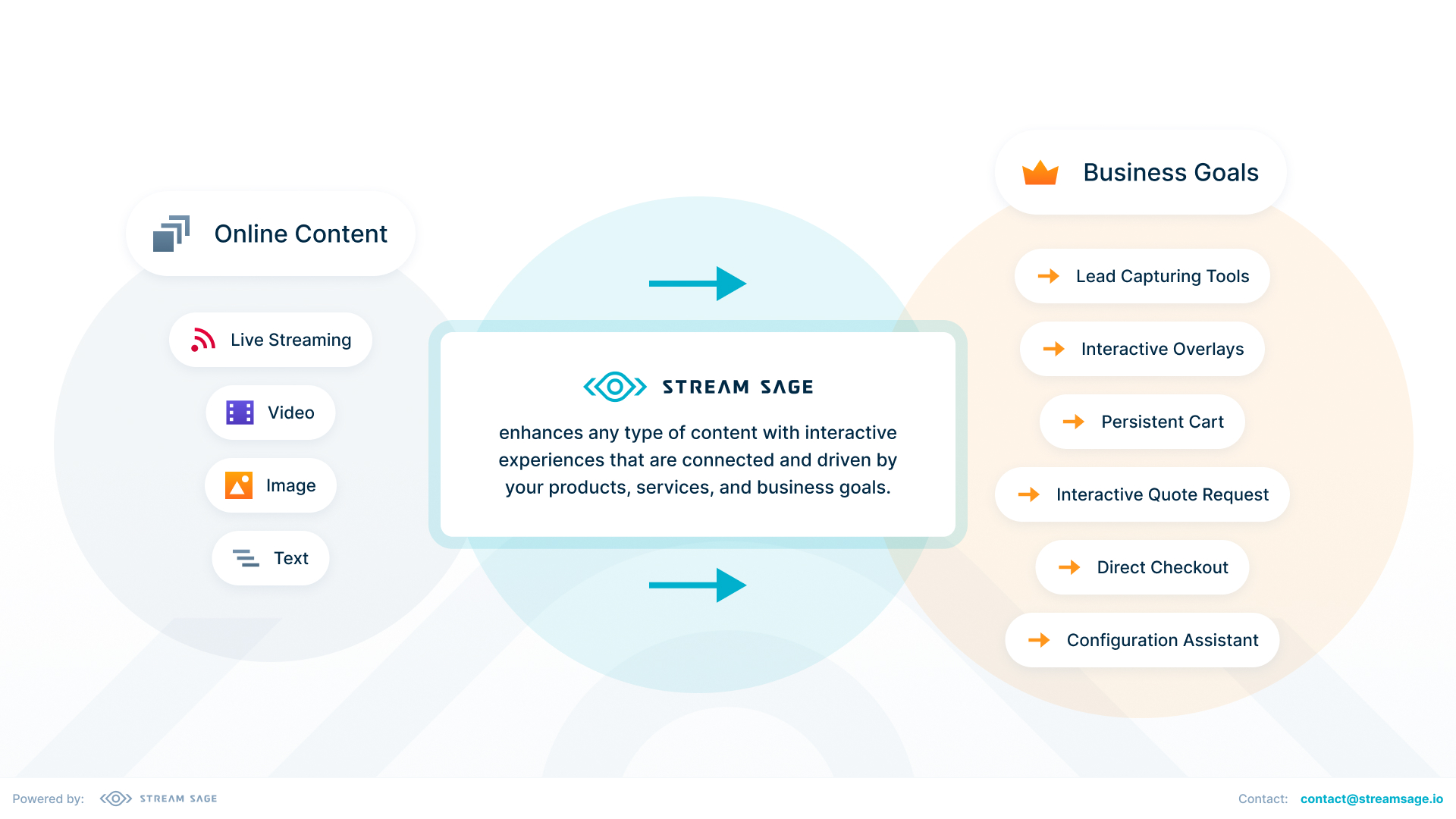Live stream shopping, also known as live shopping or live commerce, has become an increasingly popular way for brands and retailers to engage with customers and drive sales. However, like any technology, live shopping has its potential drawbacks and limitations. In this article, we'll explore some of the challenges that businesses may face when using live commerce to promote their products.
Technical Difficulties
One of the biggest challenges of live commerce is the potential for technical difficulties. Live streaming can be unpredictable, and technical glitches such as poor internet connectivity, buffering, or other issues can disrupt the shopping experience and cause frustration for both shoppers and hosts. To mitigate this risk, it's important to ensure that you have high-quality equipment and a reliable internet connection, as well as a backup plan in case of technical issues. It is always good to have a reliable platform you can use for live shopping, and Stream Sage is able to help you right away.

Limited Audience Reach
When it comes to live shopping, reaching a large audience can be challenging. While prerecorded videos can be uploaded to platforms like YouTube and shared on social media, live shopping events can only be accessed in real time. This means that potential customers must tune in at the scheduled time to participate, or they may miss out on the event altogether. While live shopping does offer the opportunity for real-time interaction and engagement with customers, it requires a more targeted approach to audience outreach and promotion. Businesses may need to rely on social media, email marketing, or other channels to promote their live shopping events and encourage viewers to tune in.
Because of this fact alone, many creators choose not even try their hand at live streaming because they don't think there will be enough interest among potential customers or viewers; however, if done right this limitation could actually work out well for everyone involved!
High Production Costs
Live commerce often requires high-quality equipment, such as cameras, lighting, and microphones, as well as skilled hosts and production staff. This can add to the cost of producing live commerce events, which may not be feasible for smaller businesses or those with limited budgets. To make live commerce more cost-effective, businesses can consider using existing equipment and resources, such as smartphones and social media platforms, to produce lower-cost live commerce events.

Source: https://naoko.streamsage.live/video/86776f30b557
Limited Product Selection
Live shopping is best suited for showcasing a limited range of products at a time, which can be a drawback for retailers with large and diverse product catalogs. To make the most of live commerce, businesses can focus on showcasing their best-selling or most unique products, rather than trying to showcase their entire catalog in a single event.
The other thing to keep in mind is that not all products are eligible for sale using this platform, especially those with high risk or low demand. For example: If your product is sold via wholesale channels or via direct sales (i.e., at trade shows), then it may not work well with live shopping.
Limited Interaction
While live commerce can provide a more interactive shopping experience than traditional e-commerce, it is still limited by the fact that shoppers cannot physically touch or try on products before making a purchase. This can make it more challenging to sell certain types of products, such as clothing or cosmetics. To overcome this challenge, businesses can provide detailed product descriptions and measurements, as well as offer free returns or exchanges to encourage customers to make a purchase.
- Interaction is limited by the platform: When running an ad campaign on Facebook or Instagram, for example, there will be certain restrictions on what types of content you can share--namely that it must be relevant and useful for users in order for them not only see it but also engage with it (e.g., like or comment). As such, if your goal is simply brand awareness and not necessarily sales conversions then maybe this isn't such a big issue for your business model after all!
- Interaction is limited by the audience: If we consider our previous example about using social media as a channel for promoting products from eCommerce stores then there may still be other factors outside our control which could affect how successful these campaigns actually turn out - namely what kind of person they target within their respective networks? For example let's say someone has 1 million followers but most of those followers aren't interested in buying clothes so chances are any posts featuring clothes won't get much traction because they aren't reaching their intended target market effectively
Limited Availability
Live stream shopping events are typically only available for a limited time, which can create a sense of urgency for shoppers but can also limit their ability to make informed purchasing decisions. To make live commerce more effective, businesses can consider extending the availability of their live commerce events, as well as providing additional product information and customer support to help shoppers make informed decisions.
Conclusion
While live shopping can offer many benefits, it's important to be aware of the potential drawbacks and limitations. By addressing these challenges and using live commerce in a strategic and cost-effective way, businesses can leverage this technology to engage with customers and drive sales. If you have any questions about live shopping or want some help getting started, feel free to reach out at support@streamsage.io. We can help you start a free live stream shopping experience within days!